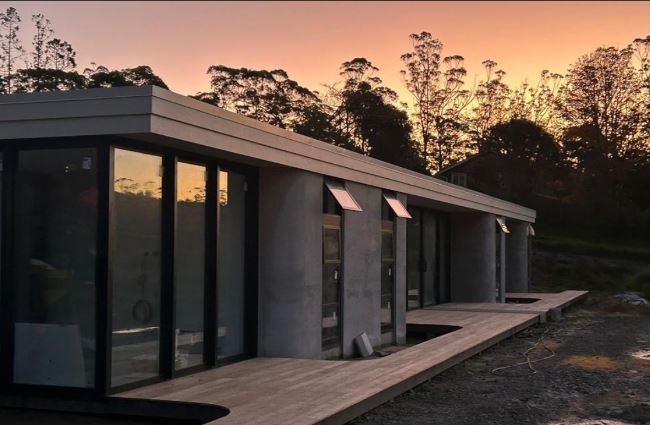
The construction industry is surging ahead in adopting 3D-printed concrete walls as a viable and sustainable source for building houses all over the world. After the first 3D printed house in Guatemala last month, New Zealand created the largest 3D printed building in the Southern Hemisphere using QOROX 3D concrete printing technologies.
The Waikato-based 3D concrete printing company has been working in the Kiwi construction industry since 2018 but this is the first time they built a fully 3D printed residential home in Auckland as part of the ‘Paremoremo House’ project.
The 252 square meters area 3D printed house was built with 3D printed concrete panels with the help of design from Dorrington Atcheson Architects (DAA). The building can accommodate a family of four.
Speaking about the matter, QOROX’s CEO, Wafaey Swelim said: “DAA provided an amazing design which enabled us to fully utilize the design capabilities of our 3D concrete printer and produce a strong, secure and warm home for the owners to enjoy for many generations to come. People who visit the home are so impressed by its calmness and warmth”.
Cost-efficient personalization with locally sourced materials
The QOROX 3D printing technology helped to reduce costs and made the construction process more sustainable. The company created 63 3D printed concrete panels with 80% locally sourced materials. Prior to on-site installations the walls were printed at a prefabrication facility in Hamilton which ensures optimal printing conditions. This helped QOROX to reduce the emissions by 30% compared to conventional concrete building process.
According to Swelim, the 3D printing technology enabled “the formation of wall cavities for insulation, plumbing and electrical wiring” along with customization based on future owners’ preferences.
The DAA director Tim Dorrington praised the technology by saying, “It’s pretty cost-effective, and you can get the geometric proportions and shapes that you would have to spend a lot of money to get if you did it in traditional concrete construction”.
Added to this the 3D concrete printed walls provide thermal mass quality which makes it climate resilient and adaptable to New Zealand’s environment. The 3D printed house can retain warmth in the cold winter months and also withstand flooding and earthquakes which are prone in the region as 3D concrete printing makes it flood-proof and earthquake-proof.
The company has prepared itself for the “3D concrete printing revolution” by tying up with the Dutch 3D-tech company CyBe Construction to sell their concrete 3D printing solutions along with CyBe printers.
Remember, you can post job opportunities in the AM Industry on 3D ADEPT Media free of charge or look for a job via our job board. Make sure to follow us on our social networks and subscribe to our weekly newsletter : Facebook, Twitter, LinkedIn & Instagram ! If you want to be featured in the next issue of our digital magazine or if you hear a story that needs to be heard, make sure to send it to contact@3dadept.com





